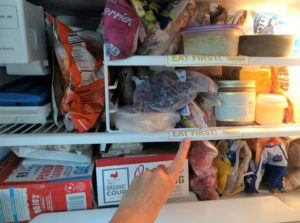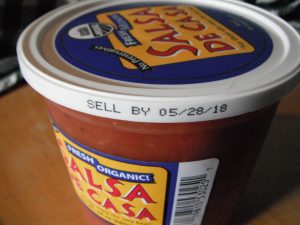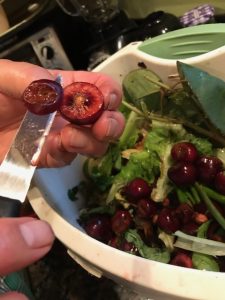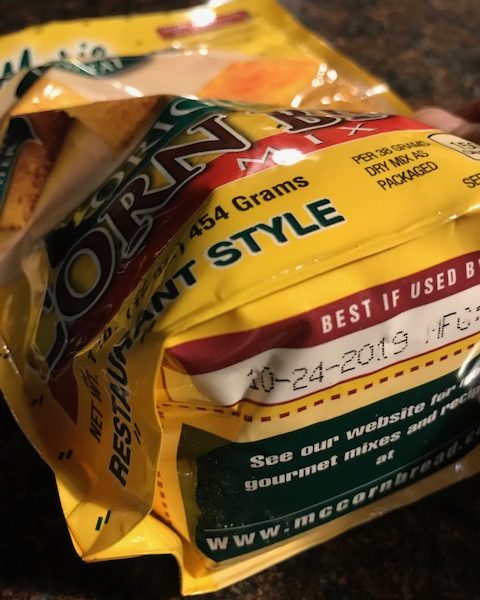Greetings, Conscientious Food Consumers!
As we hurtle toward the holidays and the dark days of winter, so many are planning ahead, stocking up and proactively preserving, packing and pickling (as covered in our last posting of “Kitchen Confessions”). Be sure to give yourself a pat on the back for these efforts to not waste food and make the most of your household’s groceries!
 So what happens when you head to your fridge, reach for an opened carton of something, a container of leftovers, or that half-eaten something — and find it’s in the last phases of its consume-ability? What if that item that got pushed back on your “Eat First!” shelf/area now looks kind of shriveled, spotty, wrinkled, a tad moldy, or smells a bit “funky”?
So what happens when you head to your fridge, reach for an opened carton of something, a container of leftovers, or that half-eaten something — and find it’s in the last phases of its consume-ability? What if that item that got pushed back on your “Eat First!” shelf/area now looks kind of shriveled, spotty, wrinkled, a tad moldy, or smells a bit “funky”?
What happens when you encounter — omg! — a food package or container with a label informing you that its “best by,” “use by” or “sell by” date occurred last month?? (Three months ago? Or more… That’s happened, for sure, in my home!)
Take a deep breath, Conscientious Food Consumer. Many of those food items do not have to be left behind. The following resources and tips hopefully will inform and reassure you in your efforts to save even more food from going to waste while saving money too!
Food safety is a vast topic, and there is an equally-vast array of resources devoted to it, including food safety apps, books, websites, governmental agencies, advocacy groups and food industry organizations. Regulations for food date labeling also vary from state to state.
As usual, we refer you to the knowledge base at the OSU Extension Service’s Home Food Safety and Preservation program and in particular its publication on food label dates (2013). We also drew from this very informative web page by the Natural Resources Defense Council (NRDC) while researching this blog posting.
About those “Best by/Use by/Sell by” dates
As advised on page 4 of our A-Z Fruit and Vegetable Storage Guide: “a product should be safe, wholesome and of good quality if stored and handled properly.” This is a particularly relevant concern if you’re stretching your food budget by shopping discount shelves or at markets that offer popular brands and other products for significant price markdown due to their impending “Best by” or “Sell by” dates.

Prior to 2018, these dates — and terms such as “Best by” or “Use by” — referred primarily to a manufacturer’s claims for how long the product could be considered at its best for flavor, texture, odor and nutritional value (except for infant formula and some baby food labeling requirements from the federal government). The “Sell By” date helps retailers manage their inventories.
Fortunately for consumers, simplified and more uniform guidelines for food date labeling were adopted industry-wide in 2018 by the Food Marketing Institute and the Grocery Manufacturers Association. They specify that:
- “Best if used by” refers to a product’s quality; it may not taste or perform as expected after the date, but it is considered safe to use or consume.
- “Use by” applies to products that are highly perishable, thus involving food safety concerns. Such products should be consumed by the date shown on the package or discarded.
Cases in point: Our cornbread mix pictured above… and I’m still using up a jar of Thai curry paste labeled for 2018!
Check it before you chuck it. Ask your nose: does it pass the smell test? Then apply common sense and trustworthy guidelines like these from “Your Ultimate Shelf Life Guide” at StillTasty.com. It provides comprehensive advice on how long your favorite food or beverage will stay safe, with a searchable database of thousands of food items in every food category.
SMELL TEST: Merely “funky” smelling or looking
(some degradation in quality but not yet a “science experiment”)
- This is your signal to ACT before it ends up in the compost or garbage!
- BREAD: Is it merely stale or is it moldy? Stale bread = croutons or bread crumbs.
- DAIRY: Even if your milk smells a bit off or tastes sour, it’s still potentially usable for cooking and baking (unless it contains traces of mold). Think pancakes, soups, and fried eggplant batter. Or think of it as buttermilk! Hard cheeses with a little mold can be rescued by cutting one inch in and around the affected area. (Consuming soft cheeses with mold removed is not recommended.)
- MEAT: Don’t take any chances with raw meat! It’s not supposed to have much of a smell when it is still safe to prepare and eat. Just because it’s no longer bright red doesn’t mean it has spoiled. Example: Is Raw Ground Beef OK If It’s Turning Brown?
- FRUIT/VEGGIES: In many cases, you can simply remove the bruises, the brown or mushy parts and still use the food item. Wrinkly produce works just fine in many dishes, from casseroles to stir fry and soup! Again, visit StillTasty.com to check your specific item.
- Check carefully for mold, indicating potential food-borne pathogens.
- Clean your refrigerator every few months to inhibit bacterial growth, and make sure it is operating consistently at or below 40 degrees Fahrenheit.
SMELL TEST: Revolting
Obviously, you’ll want to “chuck” most anything smelly, sticky or slimy, which is an indication of advanced bacterial growth (a.k.a. science experiment)!
But it doesn’t have to go into the landfill if you’re a resident of Corvallis or Philomath (OR), where curbside composting is available. You can toss nasty, spoiled food — including meat, dairy and bones — in the gray Yard Debris (“Mixed Organics”) cart provided by Republic Services. They have a serious industrial process for turning it into a high-quality compost product.
*****
This week’s Kitchen Confession has a happy ending.


Karen Confesses/Lesson Learned:
During the summer, I came very close to composting about two cups of these “ugly” cherries, which had been neglected in the fridge instead of being enjoyed while fresh. (Remembering to practice what I preach,) I “rescued” them from the compost pail, inspected for mold, rinsed them and trimmed off the brown and pitted spots. The remaining parts of the cherries still looked and smelled good, so they got popped into the blender with some frozen blueberries and leftover ice cream for a delicious treat!
$$ Wasted: Zero
So DOES your food pass the smell test? Remember to check it before you chuck it!


 Zukes & cukes & squash, oh my! It’s Preservation Time.
Zukes & cukes & squash, oh my! It’s Preservation Time.